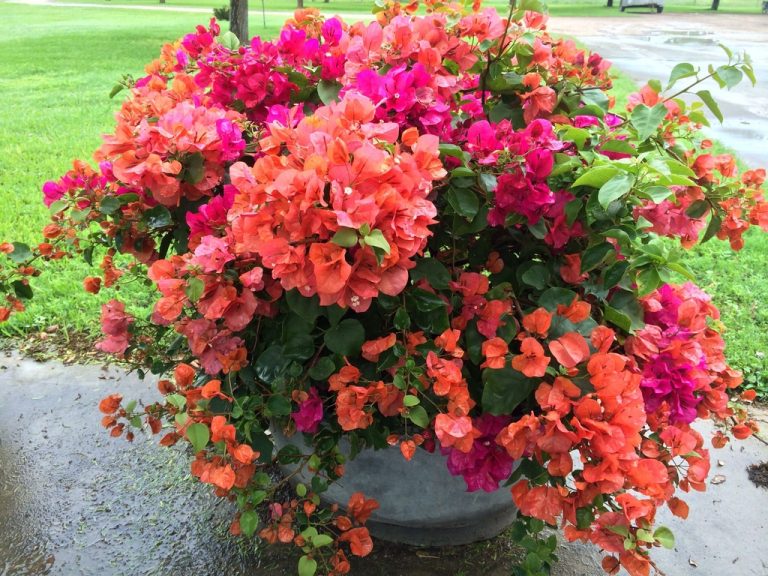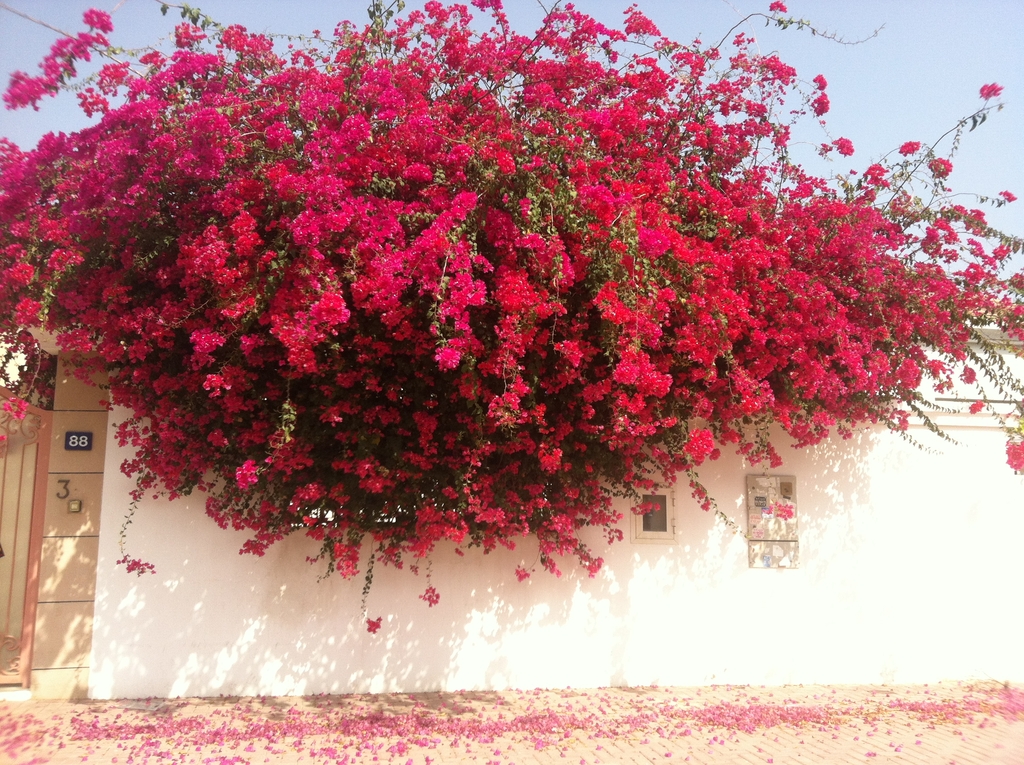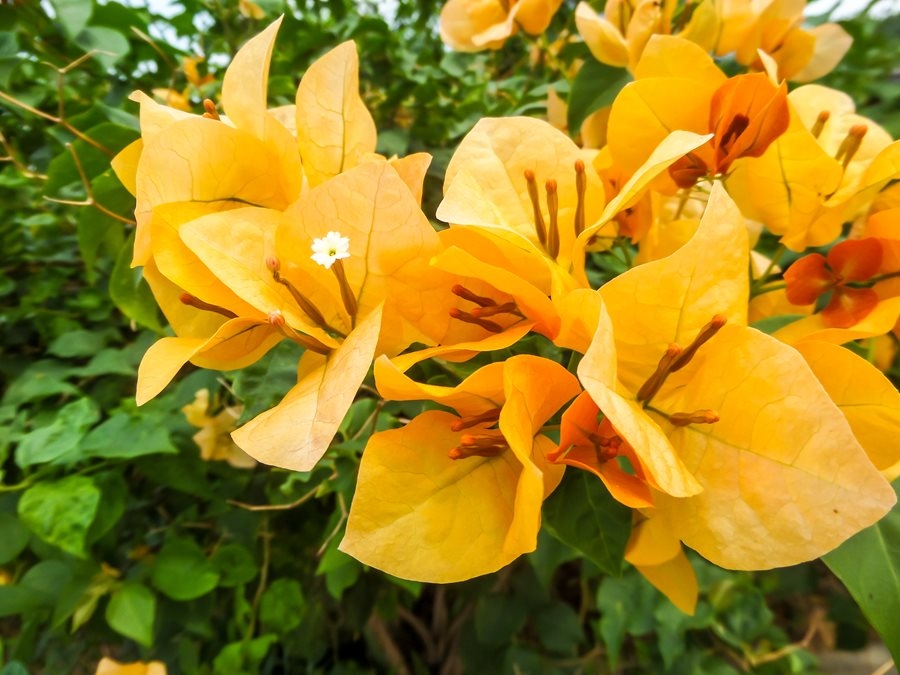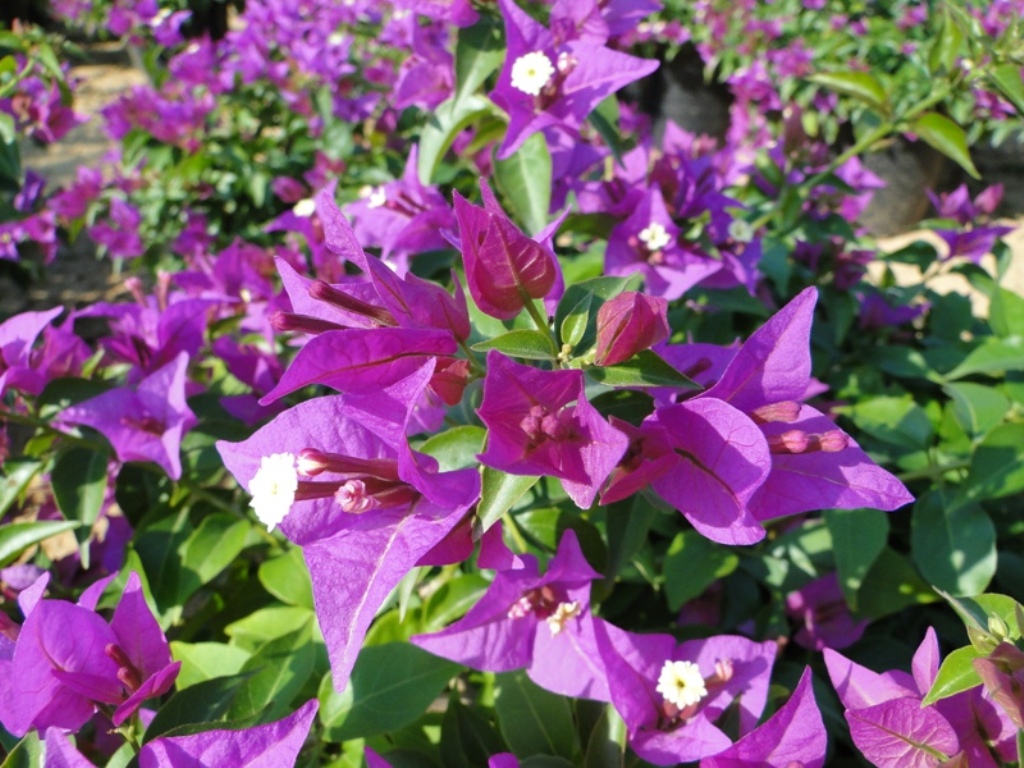The good old bougainvillea has been a sight in many gardens and around villas for years in the UAE.
Bougainvillea are thorny & ornamental vines stand out for the beautiful medley of colors that add plenty of charm to the garden.
What you need to know about bougainvillea?
It can grow to a height of upto 4m in a climate that is cold, warm, arid/semi-arid, sub-tropical and tropical. It prefers a deep, well-drained soil with full sun exposure. They bear flowers of various colors in summer and require a regular feeding with a balanced, controlled-release fertilizer. They require regular watering for good growth.
Appearance and characteristics of bougainvillea
These plants are evergreen climbers that grows in numerous colors in the warmer months. The most common varieties are shades of red, orange, pink and purple, but white and even golden forms are available. The true flower of bougainvillea is a very small cream trumpet.
As well as a stunning array of colors, there are also forms with variegated foliage—with the leaves colored green and cream—giving interest even when not in flower.
How to plant and grow bougainvillea
Bougainvillea really does best when grown in full sun.
- Plant it in well-drained potting soil.
- Add a little compost to the hole to help hold the moisture.
- If growing one of the smaller varieties in a pot or container, ensure you use a good-quality potting mix.
- Be gentle when planting your bougainvillea’s, as they don’t like much root disturbance at this time.
As bougainvillea has thorns, it is important to wear strong garden gloves and take a bit of extra care at planting and pruning time.
How to prune bougainvillea
They are best pruned once the flowering has finished. This is usually in autumn but can be at other times depending on the variety. Remove the length of the stem that has flowered just behind the first flower. If your plant puts out extra-long shoots of growth—known as water shoots—these can be removed altogether.

















0 Comments